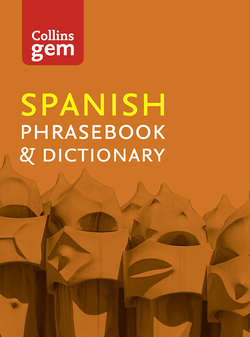Читать книгу Collins Gem - Collins Dictionaries - Страница 7
ОглавлениеSpelling and pronouncing Spanish are easy once you know the few basic rules. This book has been designed so that as you read the pronunciation of the phrases, you can follow the Spanish. This will help you to recognize the different sounds and give you a feeling for the rhythm of the language.
In Spanish, vowels have only one sound. When you find two together, pronounce both of them in quick succession, as in aceite a-they-te (see note below about pronouncing ce).
You can use this as a guide to pronouncing vowels:
a sounds like a (as in apple)
e sounds like e (as in ever)
i sounds like ee (as in even)
o sounds like o (as in shop)
u sounds like oo (as in zoo)
The syllable to be stressed is marked in bold in the pronunciation. Here are a few rules you should know:
| Spanish | sounds like | example | pronunciation |
| au | ow | autobús | ow-to-boos |
| ca | ka | cama | ka-ma |
| co | ko | con | kon |
| cu | koo | cubo | koobo |
| ce | the | cena | the-na |
| cer | thair | cerca | thairka |
| ci | thee | cine | theene |
| cia | thya | Escocia | es-ko-thya |
| ga | ga | gato | ga-to |
| go | go | algo | algo |
| gu | goo | algún | algoon |
| ge | khe | gente | khente |
| gi | khee | giro | kheero |
| j | kh | jueves | khwe-bes |
| ll | ly | llamo | lya-mo |
| ñ | ny | señor | se-nyor |
| ua | wa | cual | kwal |
| ue | we | vuelva | bwelba |
| v | b | vuelva | bwelba |
| z | th | Zaragoza | tha-ra-go-tha |
h is silent: hora o-ra, hola o-la.
r is rolled and rr even more so.
Note that the th sound in ce and ci is pronounced like in the English word thing. Similarly, the sounds for ge and gi can be tricky to grasp. You can think of kh as in the English words her and he, with strong emphasis on the h.
